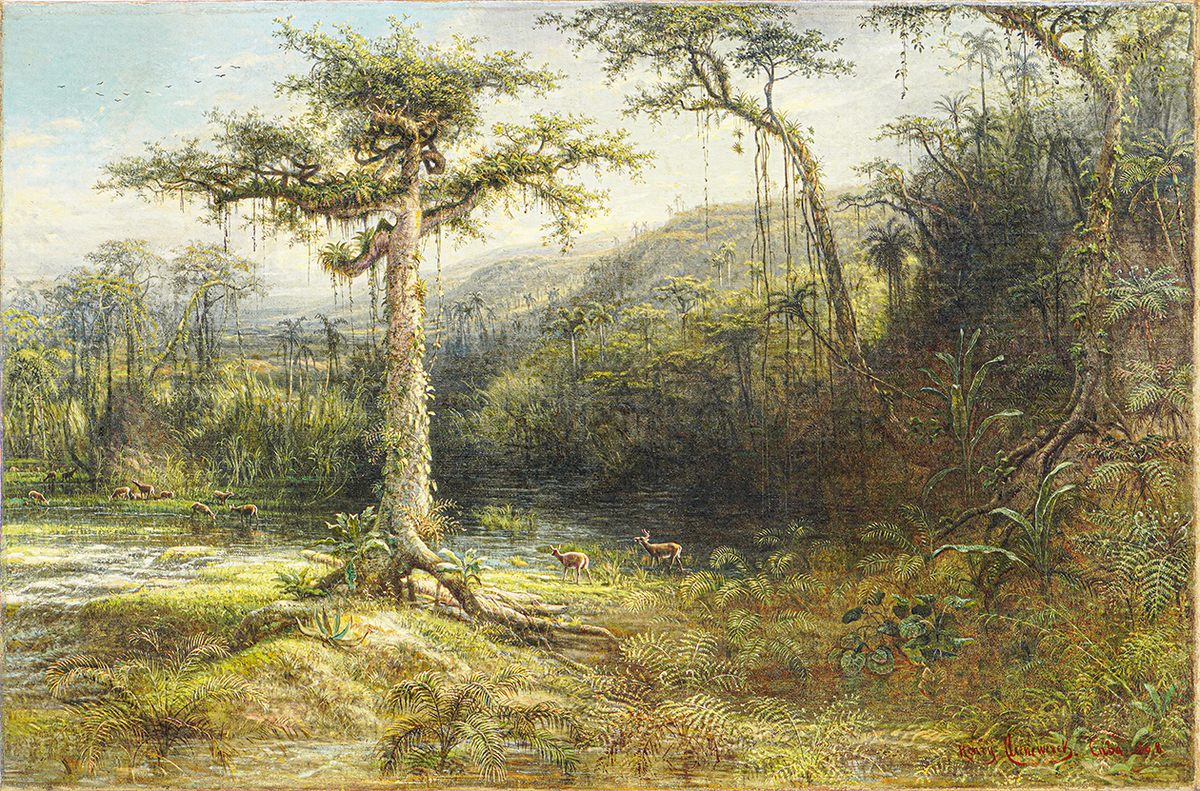 Henry Cleenewerck Henry Cleenewerck
Period: Colonial
1825 - 1901
Rio Cauto, Island of Cuba
Río Cauto, Isla de Cuba, 1868
oil on canvas
27 x 40 3/4 inches
Henry Cleenewerck (1825- 1901) Born in Watou, Belgium, in 1825. In 1854 he visited the United States. In 1863, by then in Havana, he painted a canvas ordered by the Counts of Fernandina. During his stay in Cuba, estimated to have lasted five years, he was recognized as an outstanding landscape painter. Distinguished families of the colonial society acquired his works. Jose Maria Ximeno, in 1865, held several scenes of Matanzas created by Cleenewerck in his private collection. Among these there were two canvases of the Yumuri Valley, a nocturnal landscape of the Canimar River, and the artwork Una Ceiba en San Antonio de los Baños (A Ceiba Tree in San Antonio de los Baños). His Cuban-themed works were presented at the Exhibit of Matanzas in 1881, in Trescientos Años de Arte en Cuba (Three Hundred Years of Art in Cuba) at the University of Havana in 1940, in La Pintura Colonial en Cuba (Colonial Painting in Cuba)at the National Capitol in Havana, 1950, in Pintura Española y Cubana (Spanish and Cuban Painting) at the Prado Museum in Madrid, Spain, in 1983, and in the permanent collection of the National Museum in Cuba. They were also shown at the exhibit Pintura y Litografía Cubanas (Cuban Painting and Lithography)at the Bacardi Gallery in Miami, 1988. By approximately 1868, Cleenewerck moved to Paris, where he settled until 1873. There, he painted other landscapes based on his memories of the Island. By the end of his life, Henry Cleenewerck had taken up residence in Brussels, Belgium, where he passed away in 1901.
|
